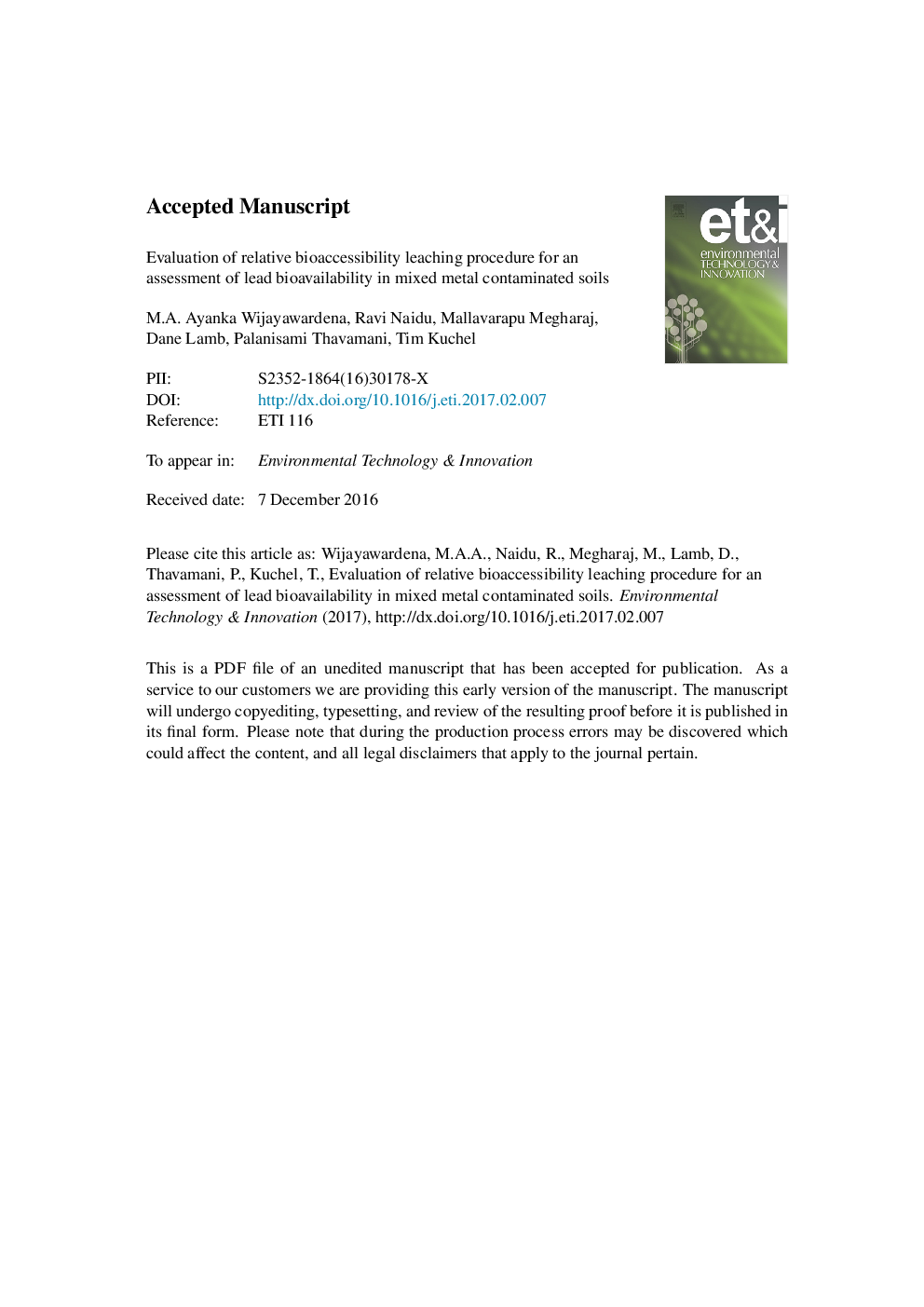| Article ID | Journal | Published Year | Pages | File Type |
|---|---|---|---|---|
| 5749647 | Environmental Technology & Innovation | 2017 | 25 Pages |
Abstract
This study investigates the effect of contaminant zinc (Zn) on lead (Pb) bioavailability and bioaccessibility in six contrasting soils spiked with 1500 mg Pb/kg and aged 12 months under laboratory conditions. Zn was added to the soils (7500 mgZn/kg soil) and aged for a further two weeks. In vivo studies were conducted using juvenile swine as a surrogate model for young children. Two compartment pharmacokinetic models were used to analyze the biological response produced by Pb oral solution and spiked soils. Absolute and relative bioavailability of Pb in soils (oral dose of 100 μ g Pb/kg body weight/day) were estimated by comparing them with intravenously administered soluble Pb salt (25 μ g Pb/kg/day) and orally administered the same Pb salt [Pb acetate =(CH3COO)2Pbâ
3H2O] administered to 3 juvenile pigs per treatment. Lead bioaccessibility was calculated using the in vitro RBALP (i.e. relative bioaccessibility leaching procedure) method. The in vitro results of RBALP were compared to in vivo relative Pb bioavailability to ascertain whether the changes in bioaccessibility correlated with the in vivo data. Although the in vivo Pb relative bioavailability (RB) in all soils except in MLA (Mount Lofty Acidic) revealed an increase (18%-159%) in the presence of Zn, the in vitro RBALP bioaccessibility results indicated otherwise (1%-38% decrease). In vivo RB of Pb in MLA declined by 37% in the presence of Zn. However, the RBALP in vitro bioaccessible Pb did not correlate with the relative bioavailabilities of Pb in the juvenile swine dosing experiment. Caution is therefore needed when predicting Pb bioavailability/bioaccessibility in the presence of metal mixtures. The literature contains much information on the correlation of metal and metalloid bioaccessibility with their bioavailability. There is, however, a paucity of studies investigating the effects of other metals on Pb and their IVIVC (in vitro and in vivo correlations). The current study addresses this knowledge gap by assessing in vivoand in vitro bioavailability of Pb in the presence of Zn.
Related Topics
Life Sciences
Environmental Science
Environmental Chemistry
Authors
M.A. Ayanka Wijayawardena, Ravi Naidu, Mallavarapu Megharaj, Dane Lamb, Palanisami Thavamani, Tim Kuchel,
